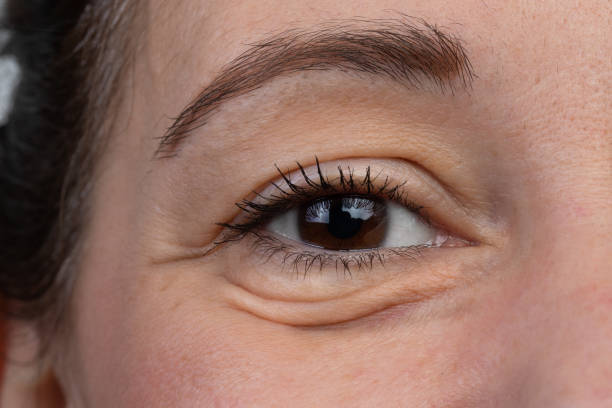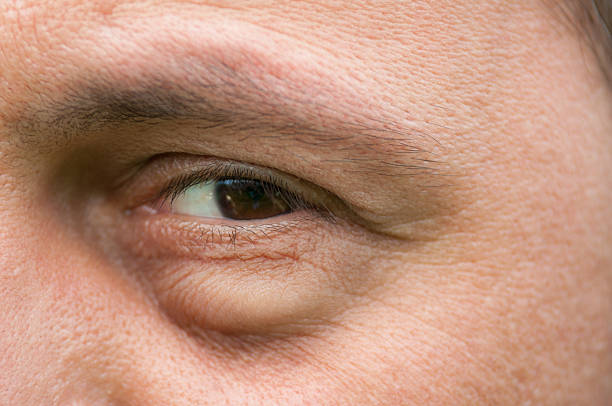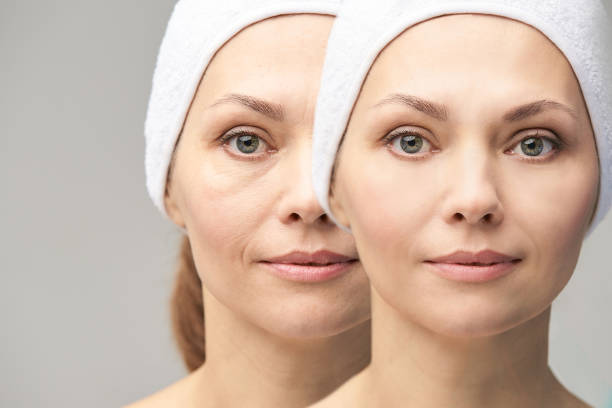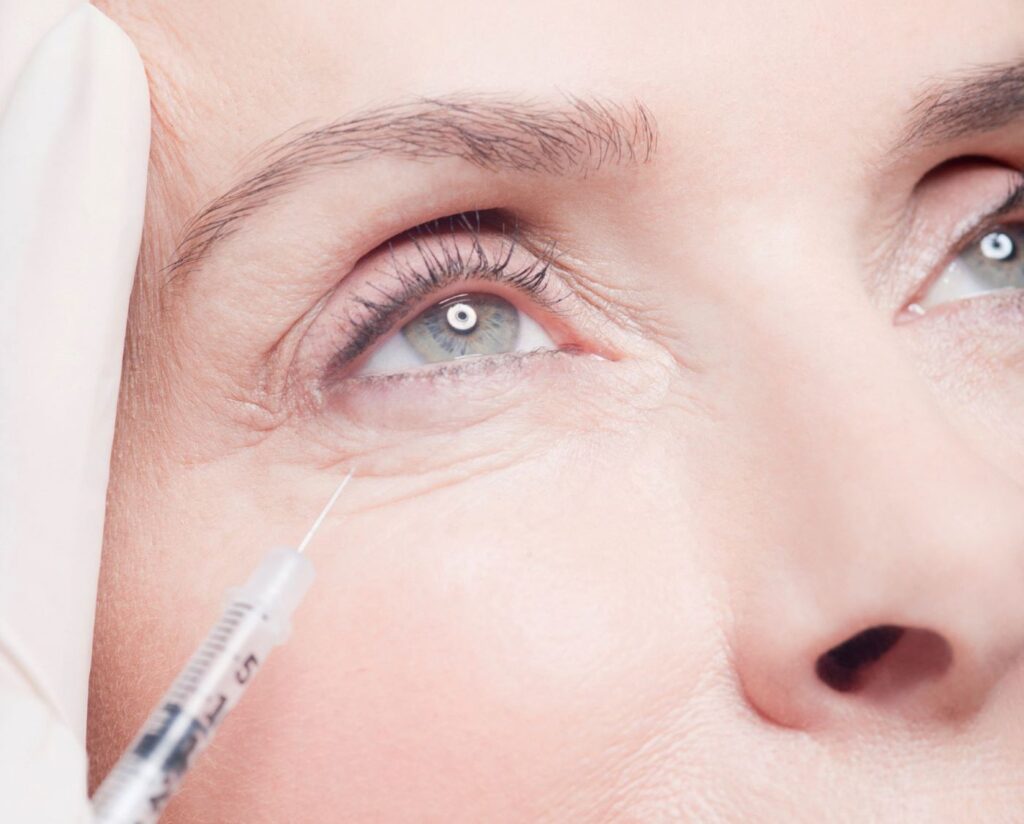Skin Care
Can Fillers Actually Make Under Eye Bags Worse?
Are you tired of appearing exhausted? Under eye bags can be a genuine confidence killer, making you look tired and older than you are. Many people use fillers as a quick remedy for this prevalent aesthetic issue. But may fillers truly worsen under-eye bags? In this article, we’ll look at the several variables that can lead to worsening under-eye bags following fillers.
What are Under Eye Bags?
Under eye bags, sometimes called periorbital puffiness, are swollen or puffy regions that appear beneath the eyes. They can be caused by a multitude of circumstances, including fluid retention, aging, heredity, allergies, insufficient sleep, and lifestyle habits. Under-eye bags are a prevalent problem for both men and women, and they can have a substantial impact on one’s look and self-esteem.

Causes of Under Eye Bags
Understanding the origins of under-eye bags is critical for determining the most effective treatments. As previously stated, fluid retention, aging, genetics, allergies, insufficient sleep, and lifestyle choices can all contribute to the formation of under eye bags. Let us take a closer look at each of these aspects.
- Fluid Retention: When the body retains too much fluid, it can gather under the eyes, causing puffiness and bags. High salt intake, hormonal shifts, and certain medical disorders can all contribute to fluid retention.
- Aging: As we age, the skin around our eyes thins and loses suppleness. This might lead to the appearance of under-eye bags and wrinkles. Under eye bags can also be caused by muscular weakness and fat accumulation.
- Genetics: Certain persons are susceptible to developing under-eye bags. If your parents or close relatives suffer from under eye bags, you are more likely to have the same problem.
- Allergies: Allergic reactions can produce inflammation and edema, particularly in the under eye area. Pollen, pet dander, dust mites, and certain foods are common allergens that can cause under eye bags in susceptible people.
- Lack of Sleep: Inadequate sleep can cause fluid retention and poor circulation, both of which can contribute to the development of under eye bags. Lack of sleep also makes the skin appear dull and fatigued, making under eye bags more visible.
- Lifestyle Choices: Unhealthy lifestyle behaviors such as smoking, excessive alcohol consumption, poor food, and lack of exercise can all contribute to the formation of under eye bags. These habits can cause inflammation, fluid retention, and accelerated aging, making under-eye bags more visible.
Common Misconceptions about Fillers and Under Eye Bags
Fillers have gained popularity as a non-surgical solution for various cosmetic concerns, including under eye bags. However, there are some common misconceptions surrounding the use of fillers for this specific issue. Let’s address these misconceptions and provide a clearer understanding of how fillers work for under eye bags.
1. Fillers Can Completely Eliminate Under Eye Bags: While fillers can provide significant improvement in the appearance of under eye bags, they cannot completely eliminate them. Under eye bags have multiple causes, and fillers can only address certain aspects of the concern.
2. Fillers Are a Permanent Solution: Fillers are not a permanent solution for under eye bags. Depending on the type of filler used, results can last anywhere from several months to a couple of years. Regular maintenance treatments are often required to sustain the desired outcome.
3. Fillers Will Always Make Under Eye Bags Worse: The idea that fillers always make under eye bags worse is not accurate. When performed by an experienced and skilled injector, fillers can provide natural-looking results and improve the appearance of under eye bags. Proper placement and the right amount of filler are crucial for achieving optimal outcomes.

How Fillers Work for Under Eye Bags
Fillers are primarily composed of hyaluronic acid, a naturally occurring material in the body that helps to retain moisture and provide volume to the skin. When used to treat under eye bags, fillers are precisely injected into particular regions to restore volume, smooth wrinkles, and produce a more youthful appearance. The filler attracts water, which hydrates and plumps the skin, decreasing the appearance of under-eye bags.
It’s vital to remember that each patient’s anatomy and concerns are unique, therefore the filler approach should be personalized accordingly. An skilled injector will examine your unique needs, taking into account aspects such as skin thickness, muscle structure, and bone structure, before recommending the best filler and procedure for natural-looking results.
Potential Risks and Side Effects of Using Fillers for Under Eye Bags
Fillers for under eye bags, like any other cosmetic surgery, might have risks and adverse effects. It is critical to be aware of these before beginning treatment. While major problems are uncommon, it is critical to select a trained injector and closely follow their post-treatment instructions. Some potential hazards and adverse effects are:
- Bruising and Swelling: Mild bruising and swelling are normal after filler injections. These often resolve after a few days, but can be treated with cold compresses and arnica cream.
- Infection: Although uncommon, there is a danger of infection with filler injections. Choosing a reputable and hygienic clinic and adhering to adequate aftercare guidelines might help reduce this risk.
- Allergic Reactions: Although hyaluronic acid fillers are typically well tolerated, some people may experience an allergic reaction. It is critical to tell your injector of any known allergies or previous adverse reactions so that the right filler is selected.
- Uneven Results: Improper placement or overuse of filler can result in an uneven appearance and worsen the appearance of under eye bags. This is why it’s critical to select an expert injector who understands the complexities of under-eye treatments.

Alternatives to Fillers for Treating Under Eye Bags
While fillers can be an effective option for improving under eye bags, they are not the only treatment available. Depending on the cause and severity of your under eye bags, alternative treatments may be more suitable. Some alternatives to fillers for treating under eye bags include:
- Eye Creams: Topical eye creams with retinol, peptides, and caffeine can help decrease under-eye bags by enhancing skin suppleness, lowering inflammation, and stimulating lymphatic drainage.
- Laser Treatments: Fractional laser resurfacing and intense pulsed light (IPL) are two laser treatments that can reduce the look of under eye bags by increasing collagen synthesis, tightening the skin, and lowering pigmentation.
- Chemical Peels: Chemical peels can help exfoliate the skin, enhance texture, and lessen the appearance of under eye bags. They function by eliminating the top layers of dead skin cells, revealing smoother, brighter skin beneath.
- Microneedling: This procedure involves making microscopic punctures in the skin with a device equipped with fine needles. This increases collagen formation and improves topical treatment absorption, resulting in smoother skin and less under-eye bags.
Tips for Reducing the Appearance of Under Eye Bags Naturally
While cosmetic treatments can provide noticeable improvement, there are also natural approaches that can help reduce the appearance of under eye bags. Incorporating these tips into your daily routine can complement any treatments you may choose and promote overall skin health:
- Get Enough Sleep: Aim for 7-9 hours of good sleep per night. Sufficient sleep enables your body to repair and revitalize, lowering fluid retention and supporting good skin.
- Use Cold Compresses: Applying cold spoons, cooled cucumber slices, or cold tea bags to your eyes can help relieve swelling and puffiness. Cold temperatures constrict blood arteries, reducing inflammation.
- Hydrate and Eat a Healthy Diet: Drink plenty of water throughout the day to stay hydrated and eliminate pollutants. To promote general skin health, eat a well-balanced diet rich in fruits and vegetables, lean proteins, and healthy fats.
- Protect Your Skin: Every day, wear a broad-spectrum sunscreen with an SPF of at least 30 to protect your skin from dangerous UV radiation. UV exposure can hasten the aging process and exacerbate the look of under eye bags.
- Use Eye Creams: Look for eye creams that are specifically formulated to treat under eye bags. These lotions frequently contain caffeine, hyaluronic acid, and peptides, which can help reduce puffiness and enhance skin suppleness.

Consultation and Choosing the Right Provider for Under Eye Bag Treatments
Before undergoing any cosmetic procedure, it’s crucial to consult with a qualified professional who can offer personalized advice tailored to your unique situation. When seeking treatment for under eye bags, consider the following factors:
- Credentials and Experience: Select a professional who is skilled and experienced in treating under eye bags. Look for certificates, ratings, and before-and-after images to determine their level of experience.
- Personalized Assessment: Before recommending a treatment plan, a professional specialist will thoroughly evaluate your issues, medical history, and cosmetic goals. Avoid suppliers that take a one-size-fits-all strategy.
- Communication and Trust: Maintaining open and honest contact with your provider is vital. They should answer all of your questions and concerns, as well as set realistic expectations for the treatment’s success.
- Hygiene and Safety: Ensure that the clinic or institution follows stringent hygiene and safety procedures. This involves utilizing sterile instruments, keeping a clean atmosphere, and following basic infection control protocols.
Real-Life Experiences and Testimonials of Using Fillers for Under Eye Bags
While everyone’s experience with fillers for under eye bags is unique, reading real-life anecdotes and testimonials might provide useful insights. Many people have recounted their experiences using fillers for under eye bags, stressing how it improved their appearance and self-confidence. Reading or viewing these testimonies will help you comprehend the treatment’s potential benefits and consequences.
Conclusion
Dealing with under eye bags can be quite bothersome, but fortunately, there are several treatment options at our disposal. Fillers, in particular, offer a temporary yet effective solution by replenishing volume and diminishing the visibility of under eye bags. The key lies in selecting a skilled injector who can evaluate my individual needs, suggesting the most fitting filler and technique for achieving results that appear natural.
It’s essential to recognize that addressing the underlying causes of under eye bags and incorporating natural remedies into my routine can also contribute to reducing their appearance. Seeking guidance from a qualified professional is crucial to determining the optimal approach for my unique situation and ultimately reclaiming a more youthful and refreshed appearance.
Trusted Health, Wellness, and Medical advice for your well-being


